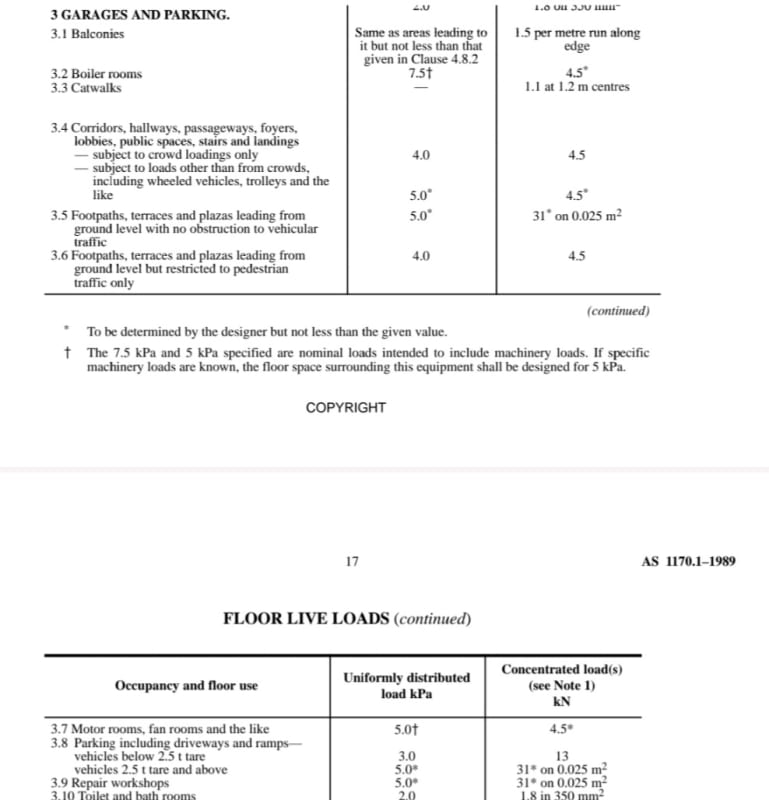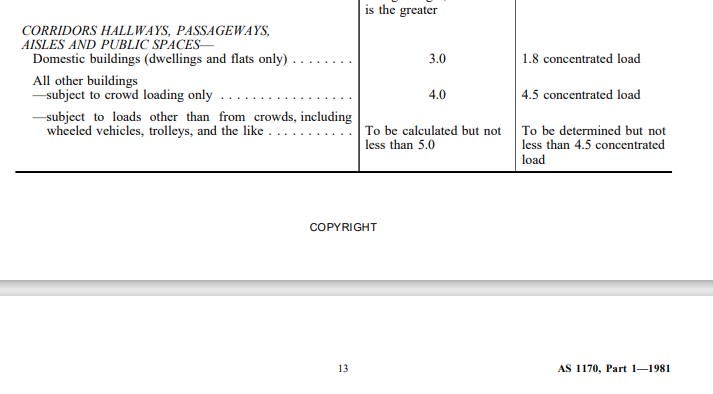Settingsun
Structural
Can someone help me with the reasoning for the occupancy C3 loads for trolleys vs no trolleys? According to the commentary, this refers to trolleys up to 3 kN weight. But the difference is 5 kPa vs 4 kPa, with 4.5 kN concentrated for both cases.
Why does a trolley that totals 0.75 m2 of 4 kPa loading require bumping the UDL? I can understand a slightly higher concentrated load but not designing for literally tonnes of additional load over an area.
Extra question: Are shopping centre car parks required to be designed for 5 kPa instead of the 2.5 kPa for occupancy F? Seems far fetched that a cleaner's trolley is twice the load of modern cars.
Why does a trolley that totals 0.75 m2 of 4 kPa loading require bumping the UDL? I can understand a slightly higher concentrated load but not designing for literally tonnes of additional load over an area.
Extra question: Are shopping centre car parks required to be designed for 5 kPa instead of the 2.5 kPa for occupancy F? Seems far fetched that a cleaner's trolley is twice the load of modern cars.



